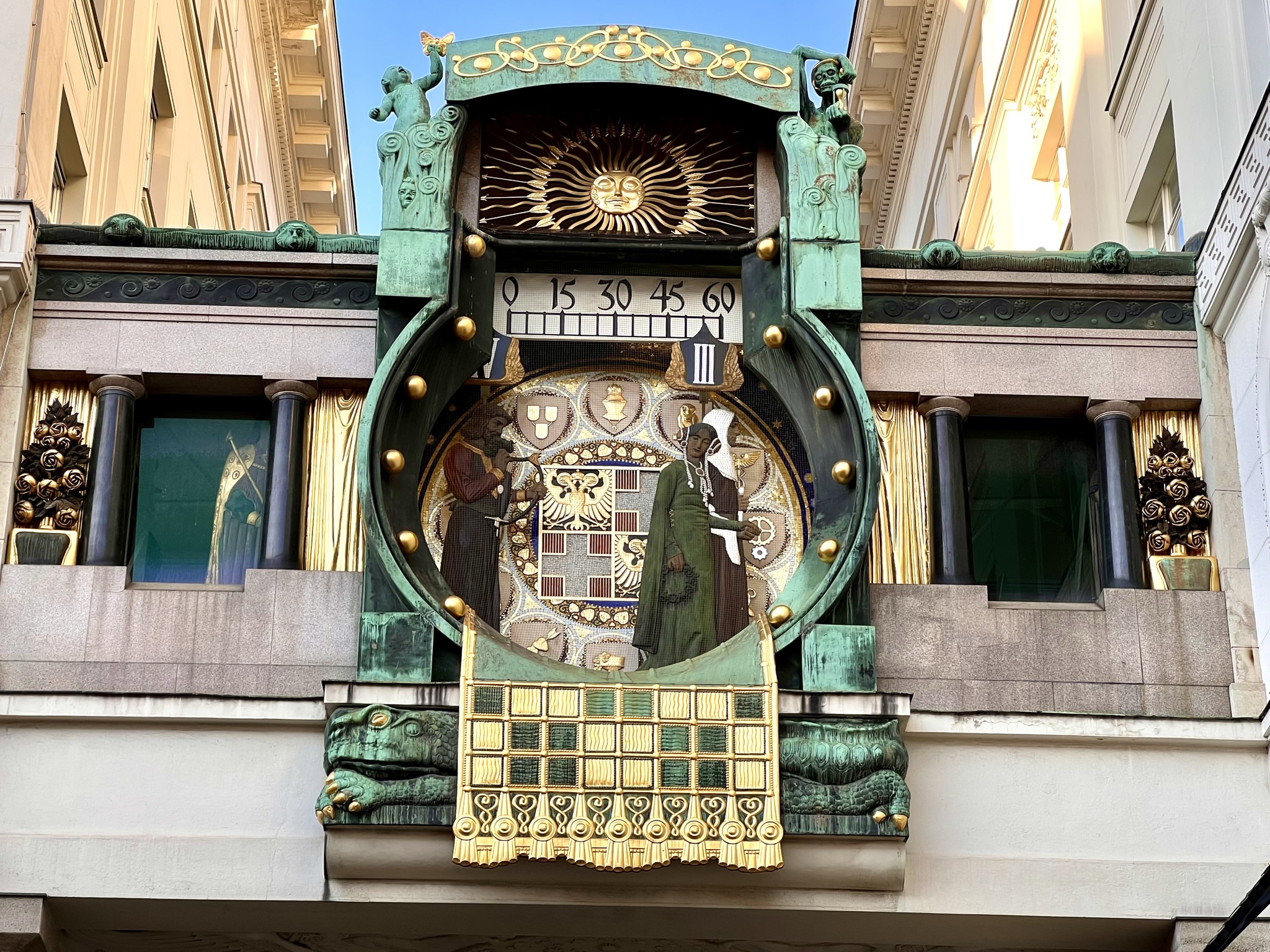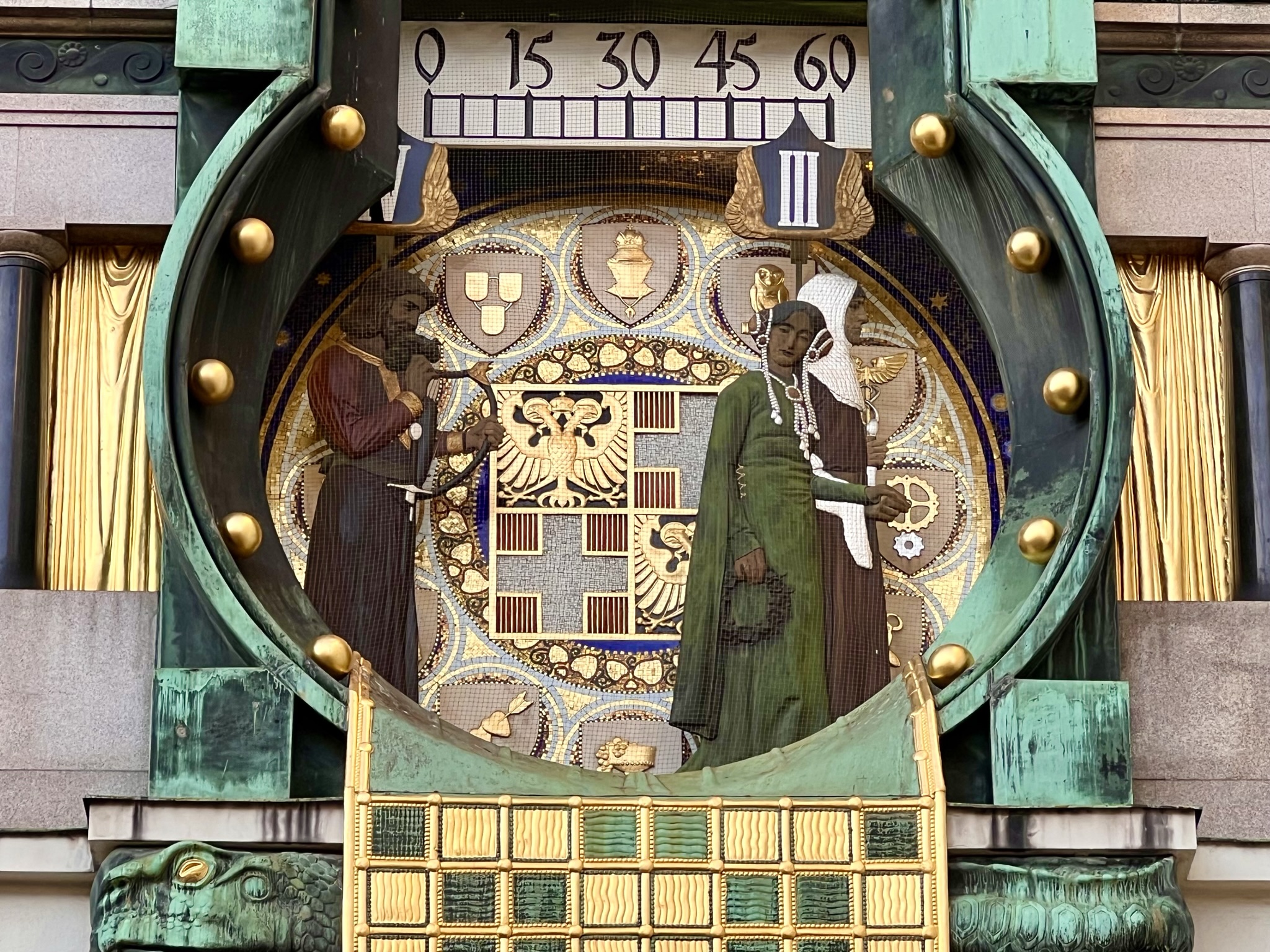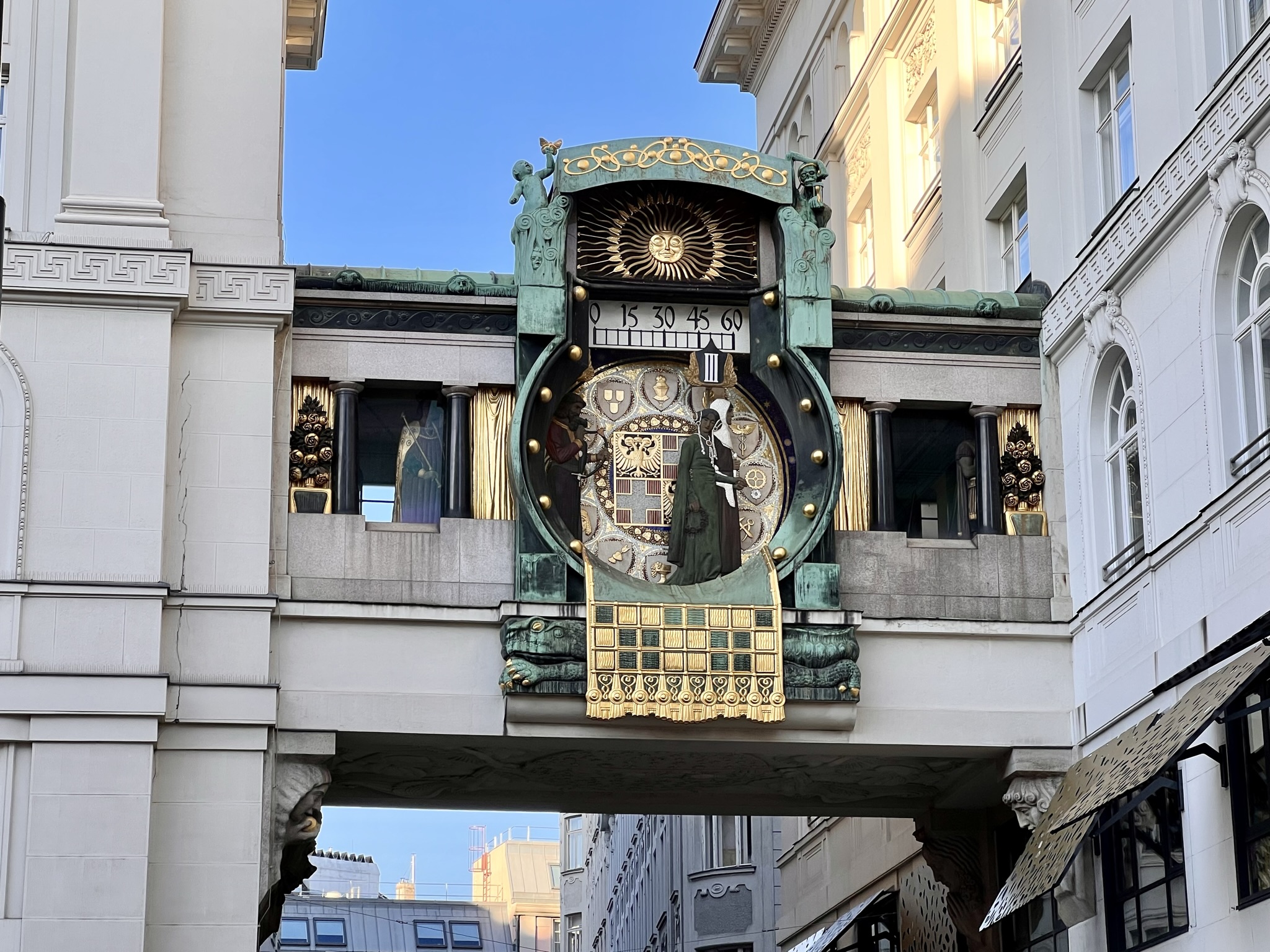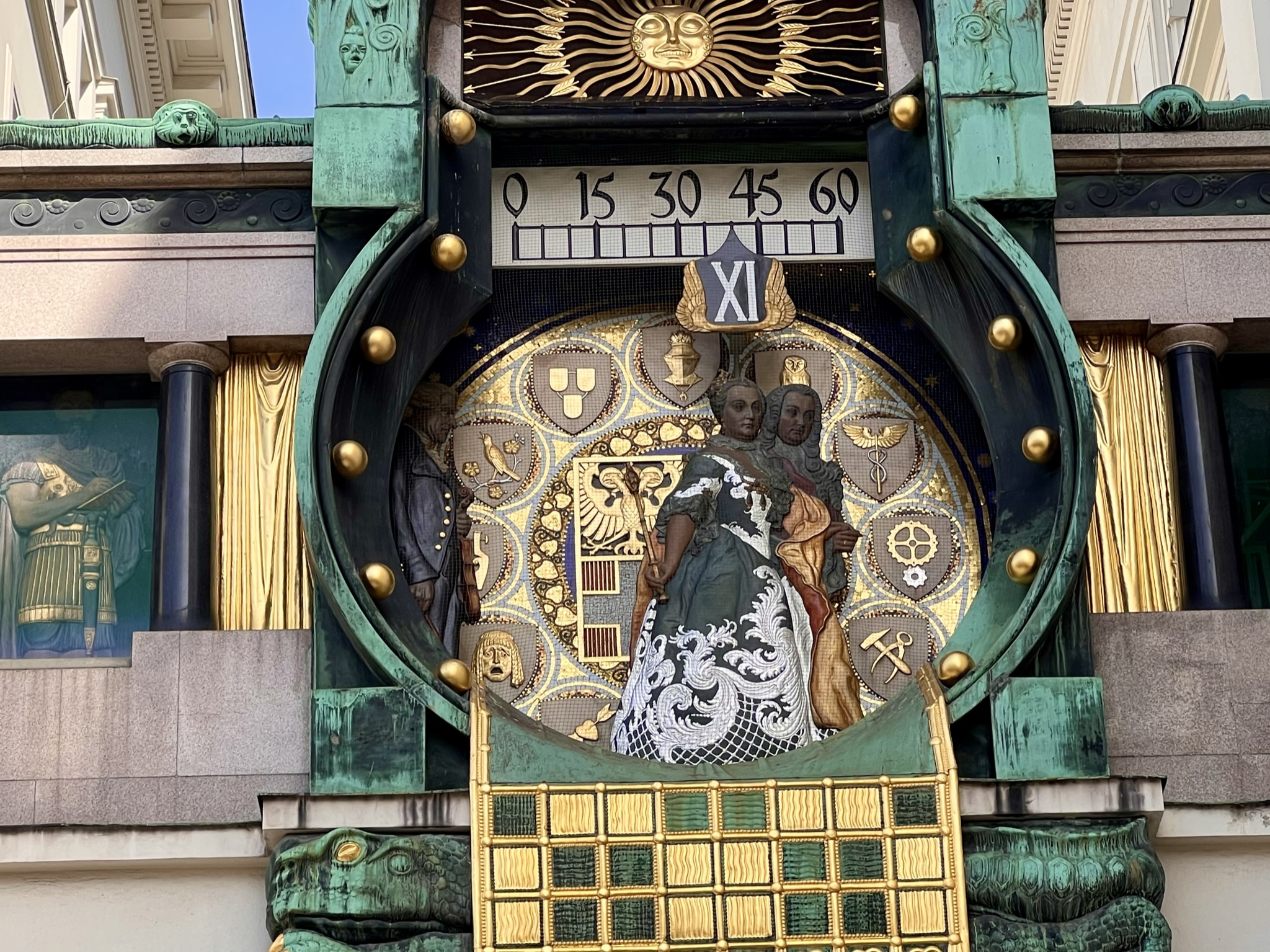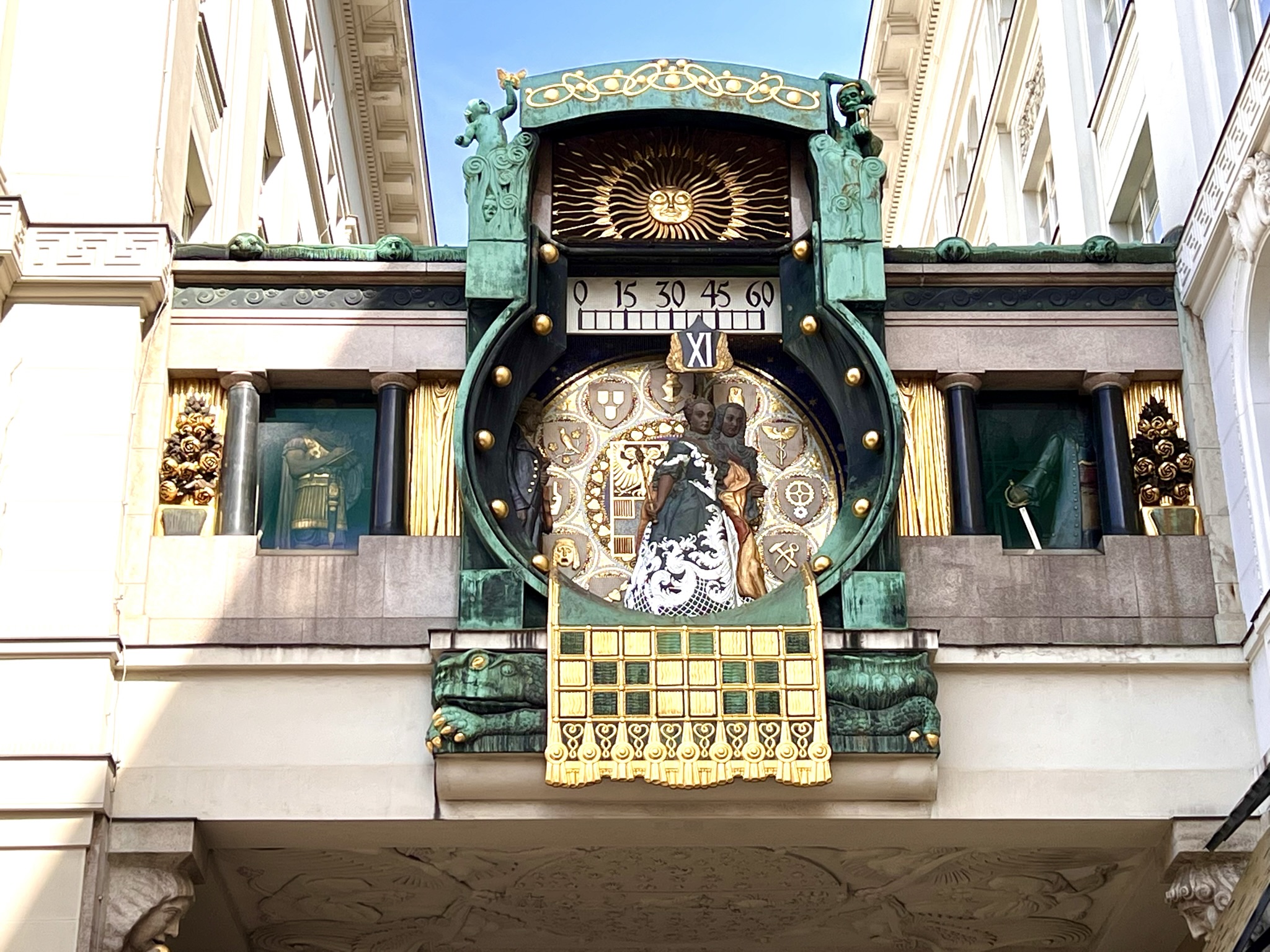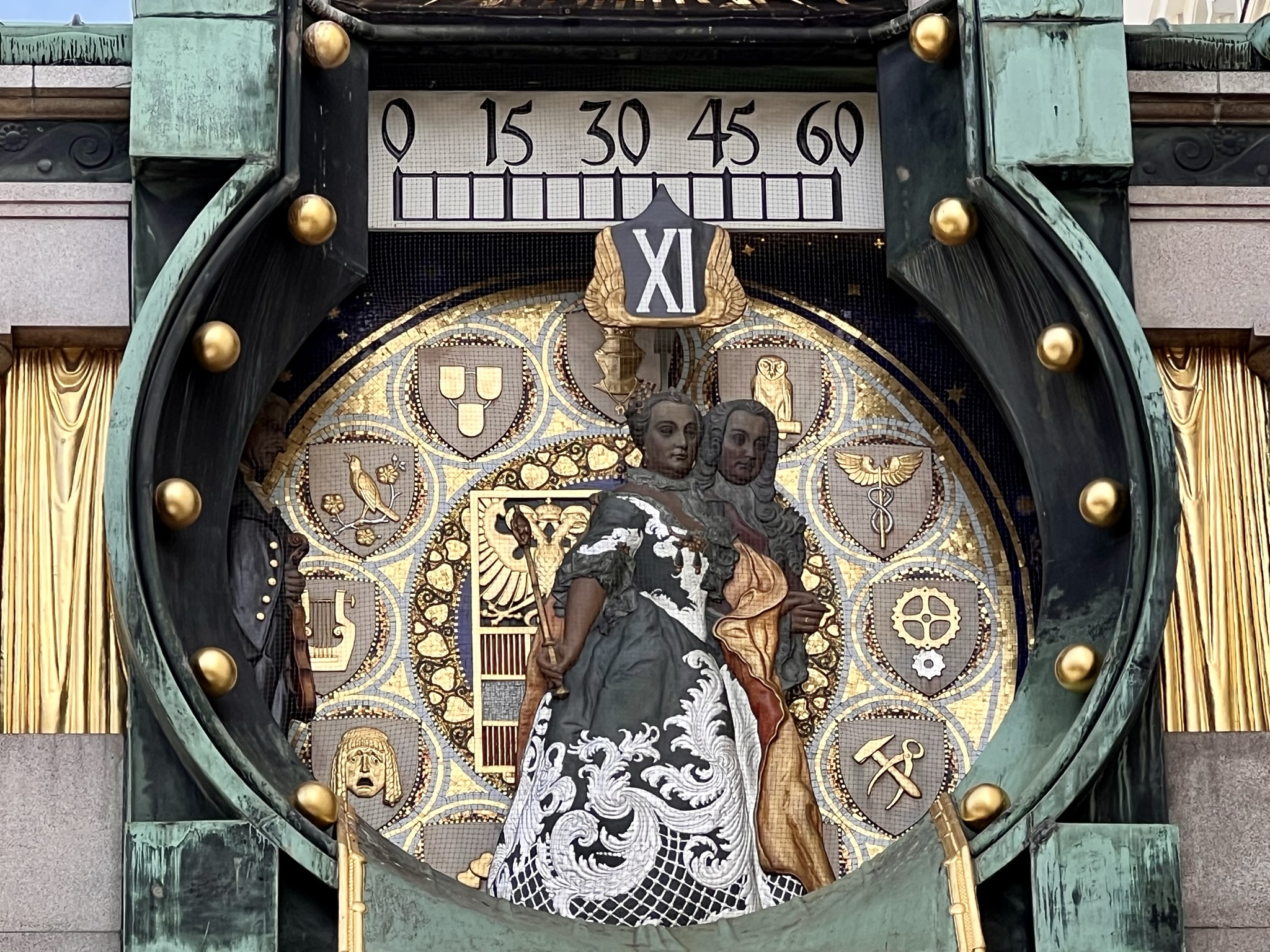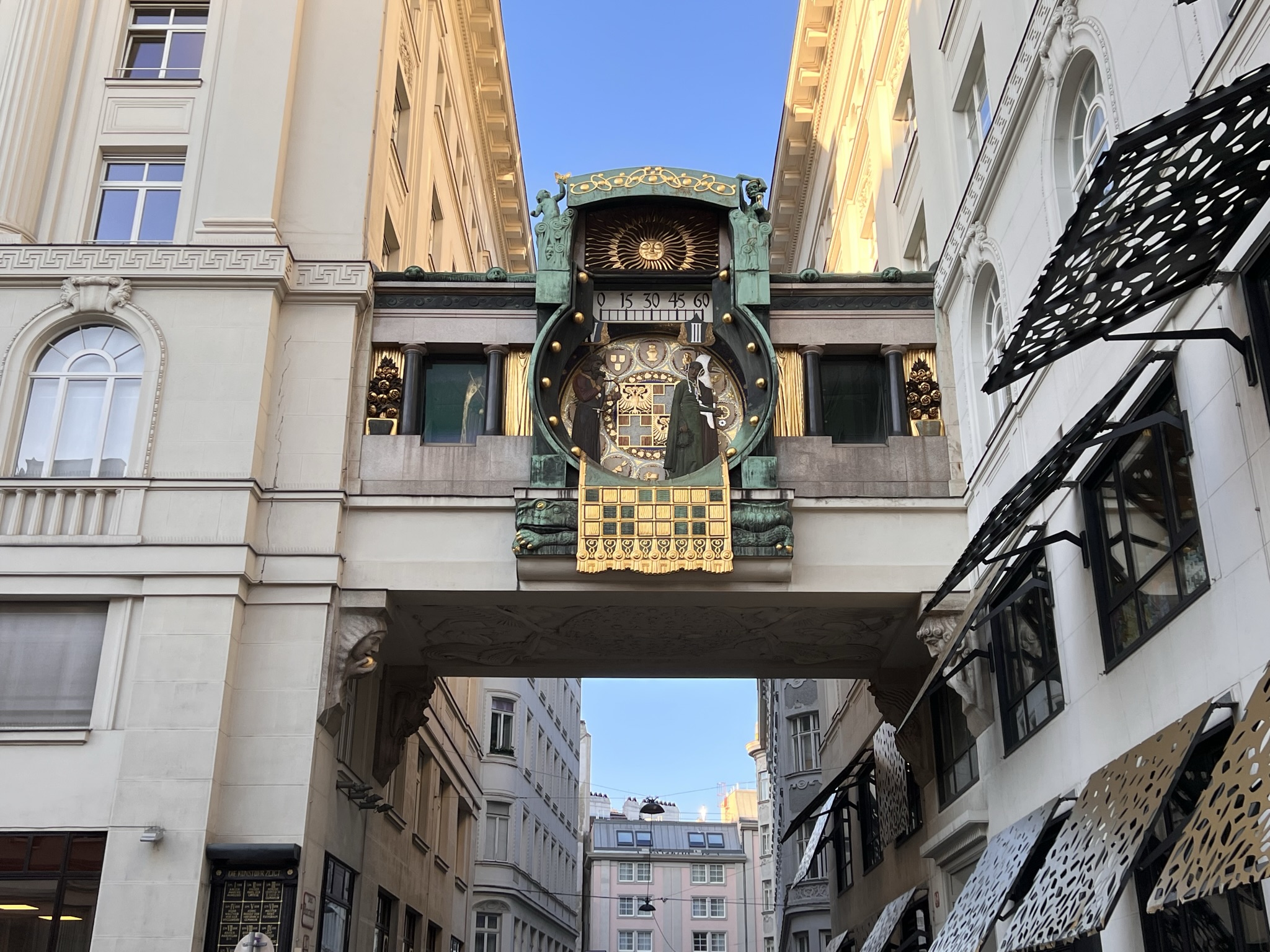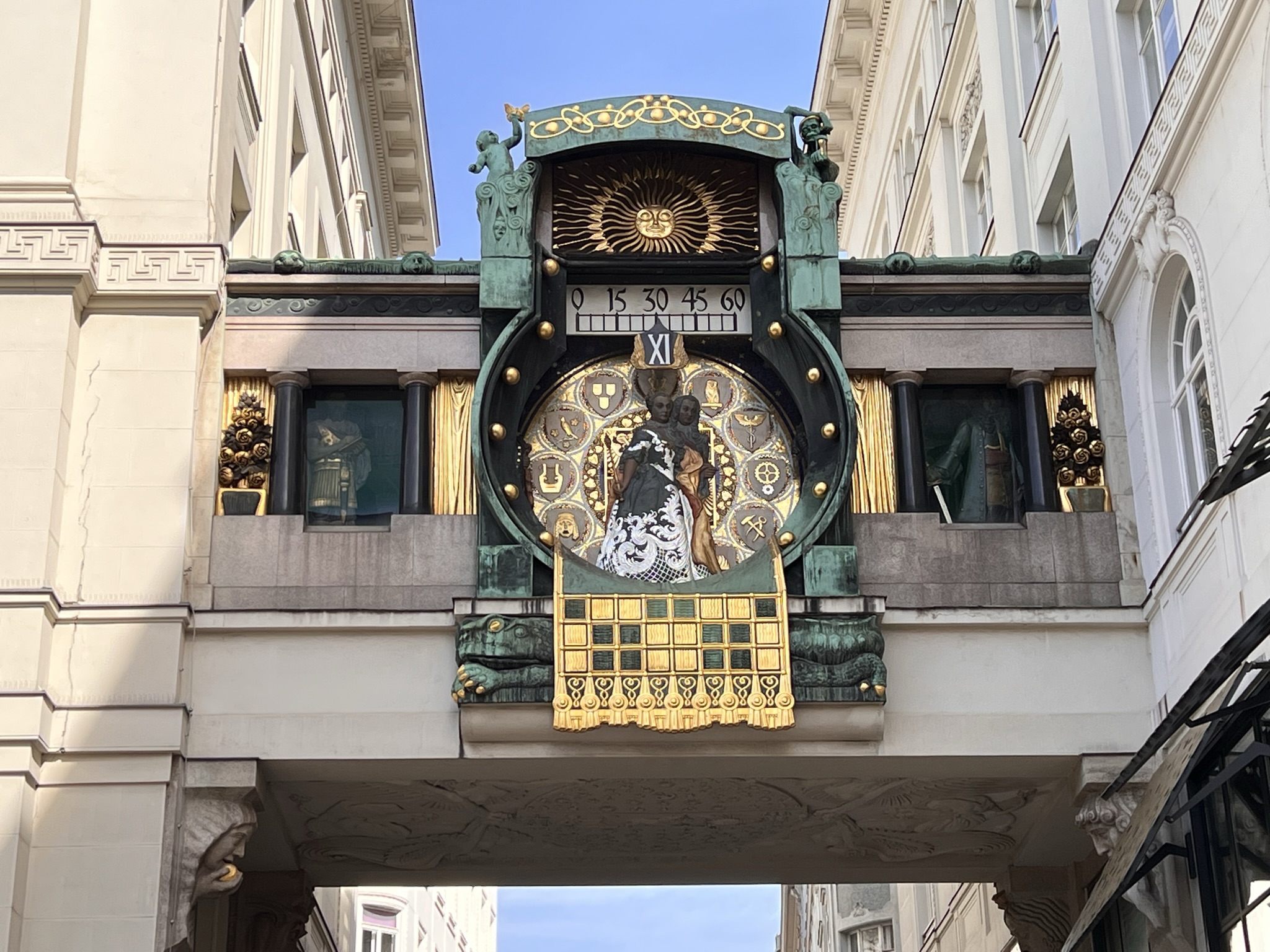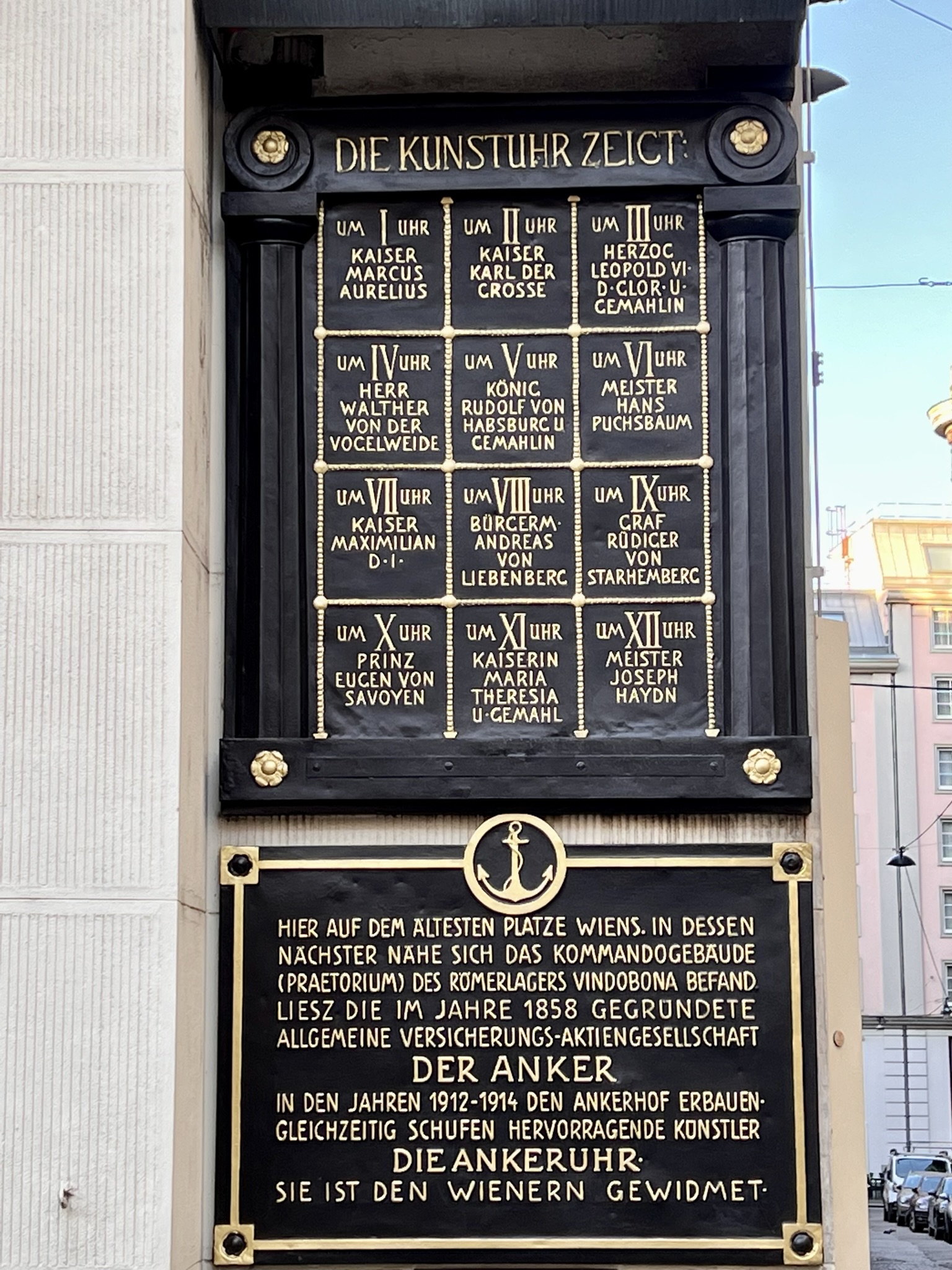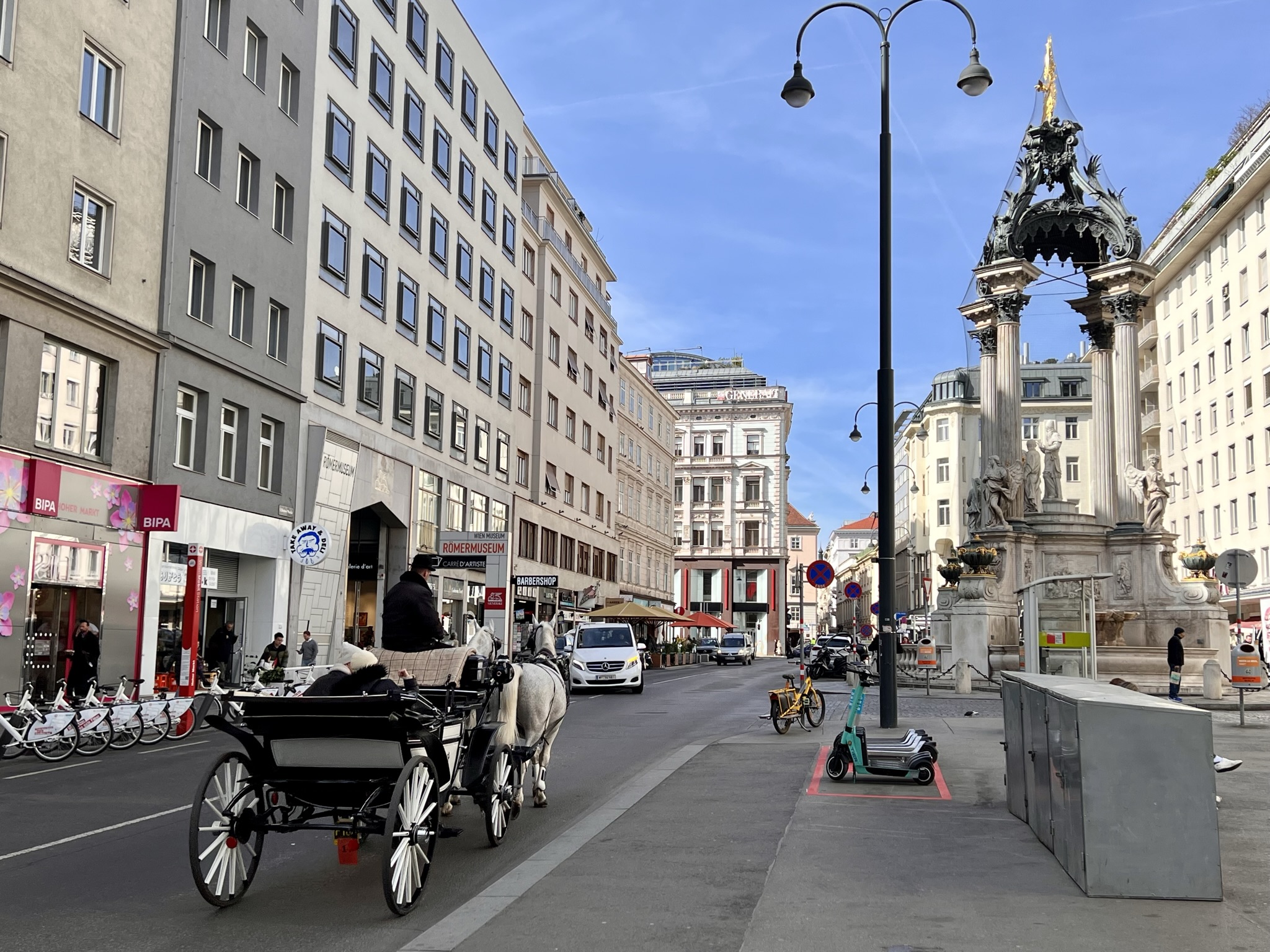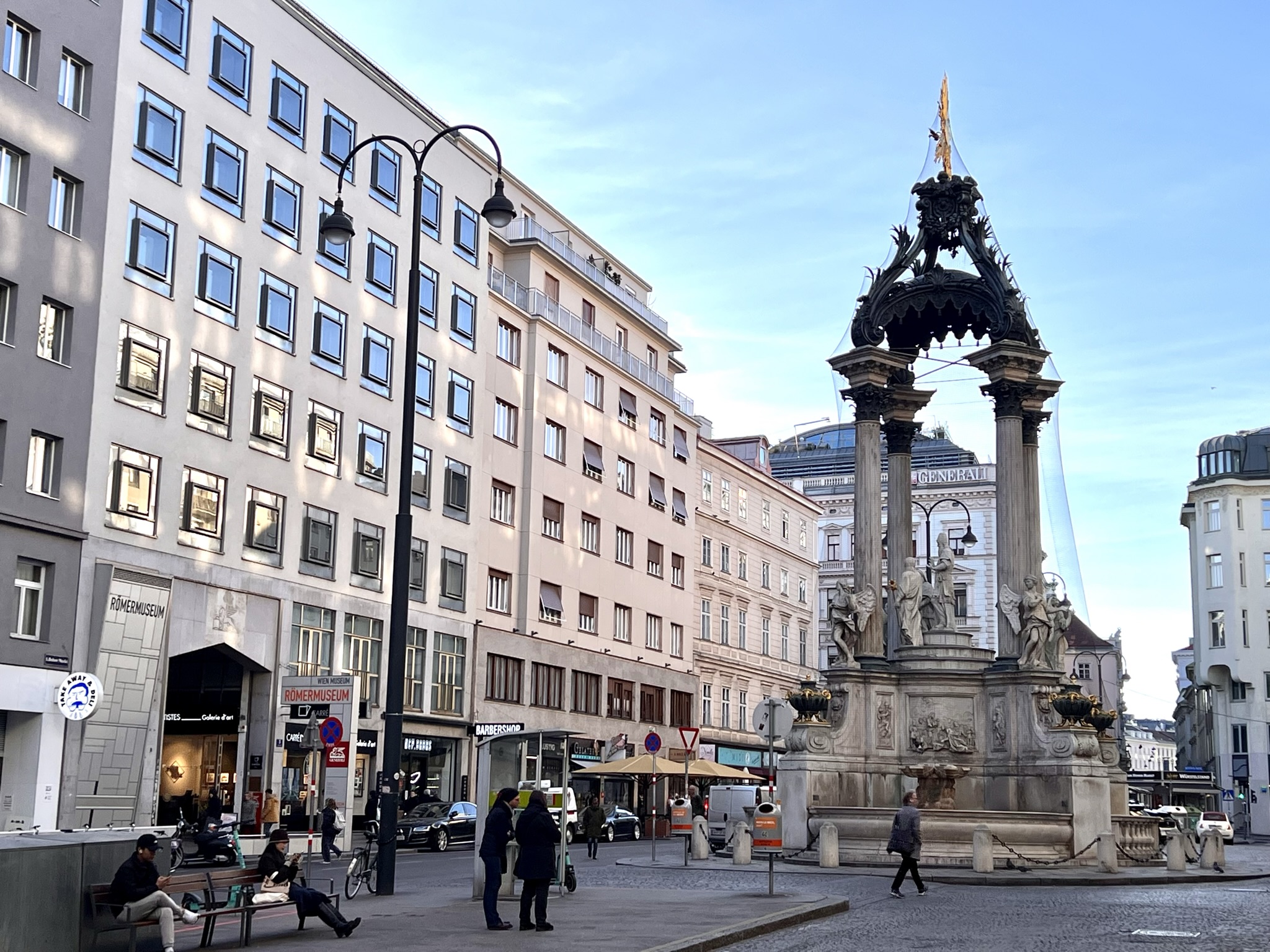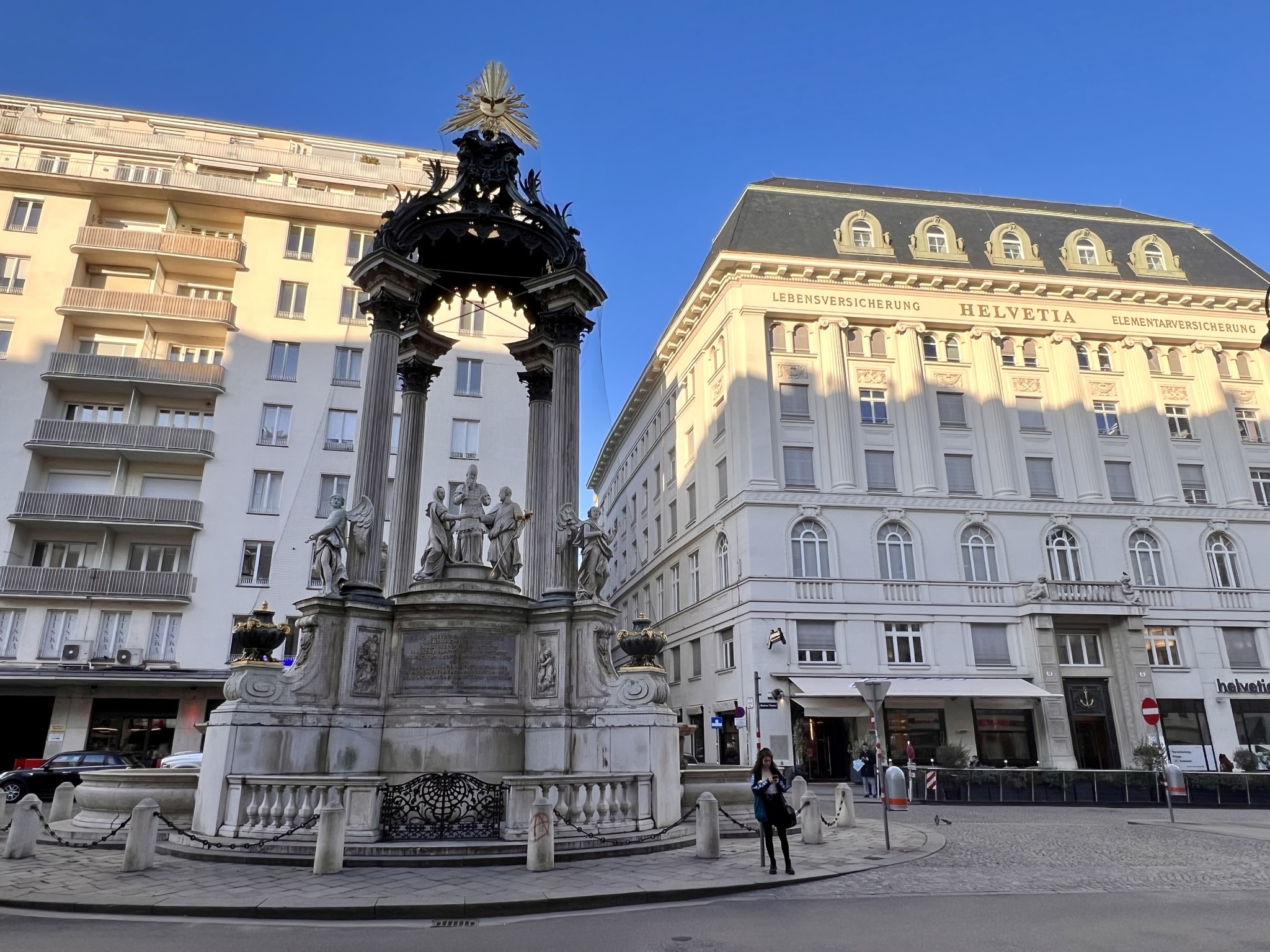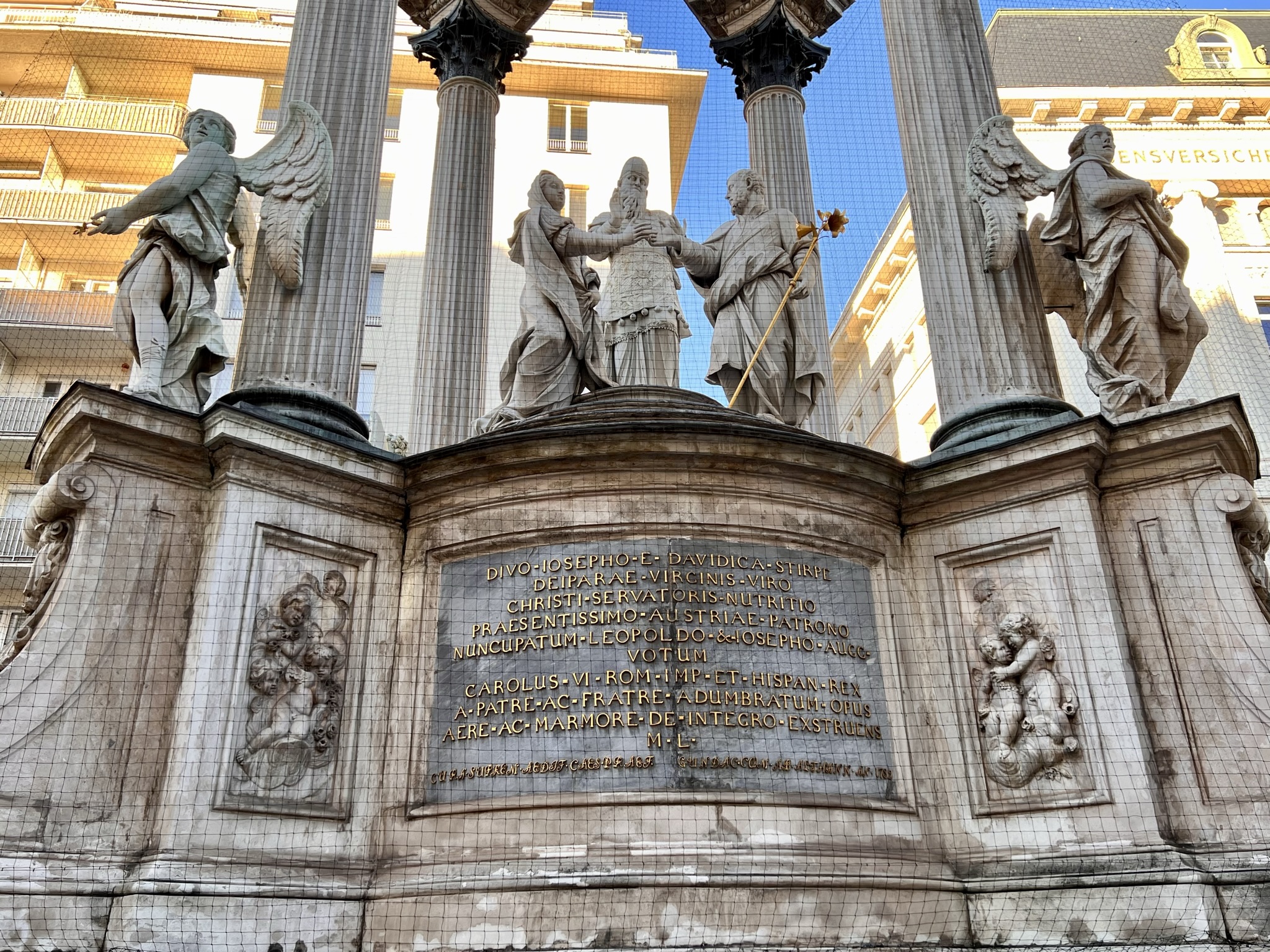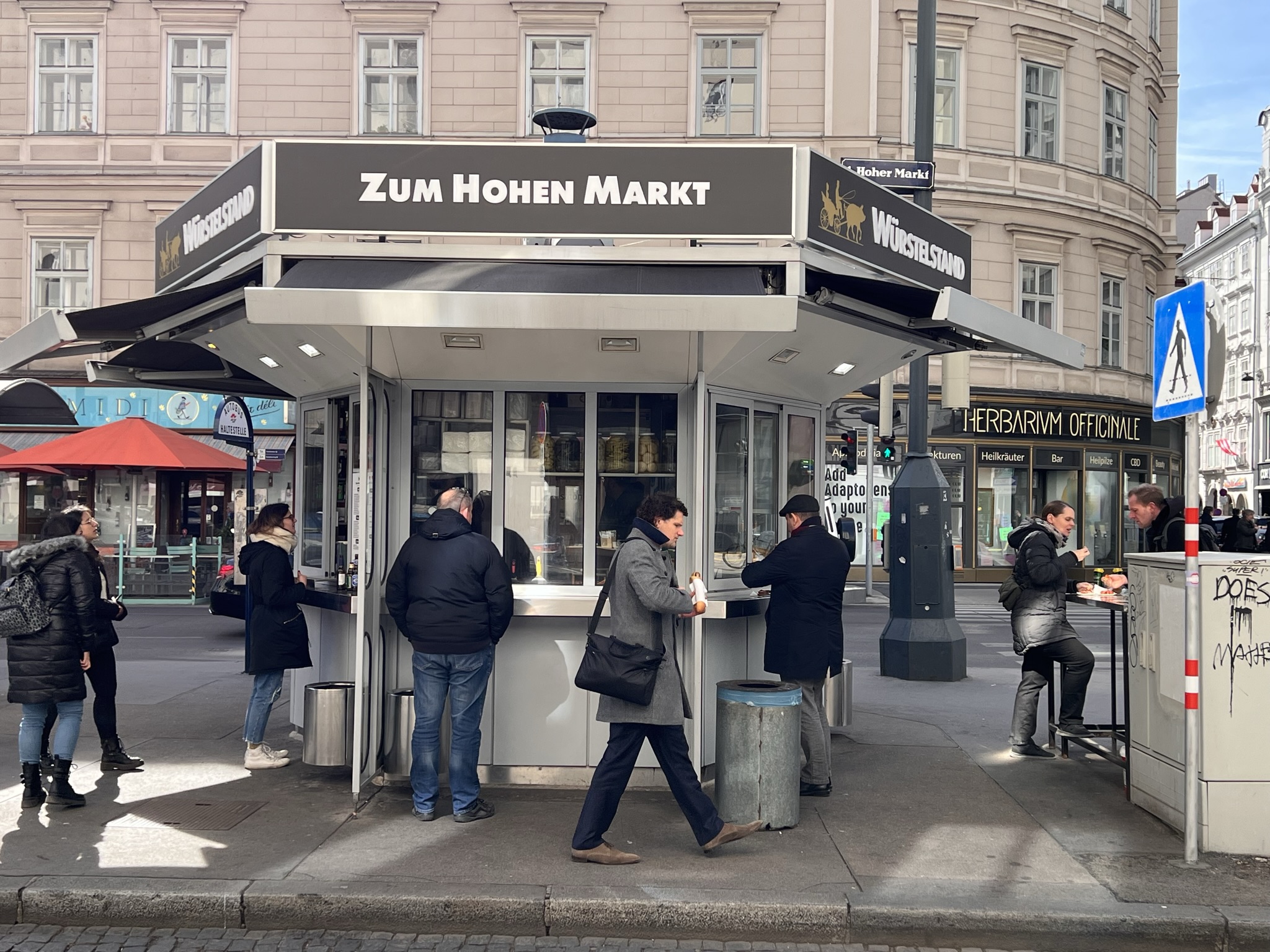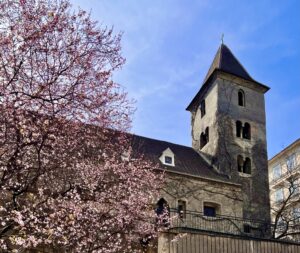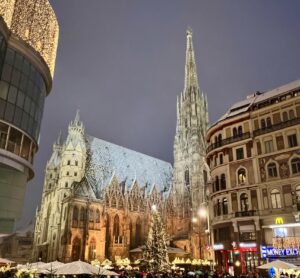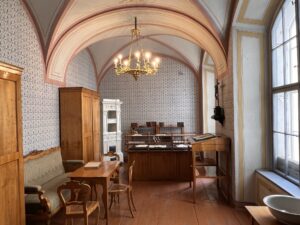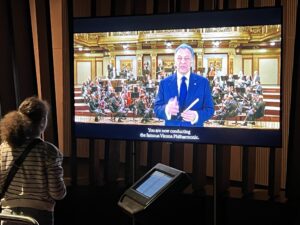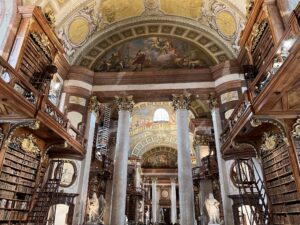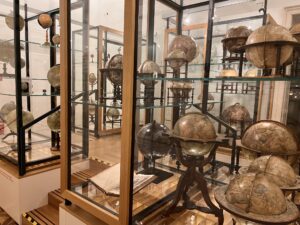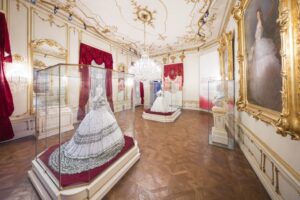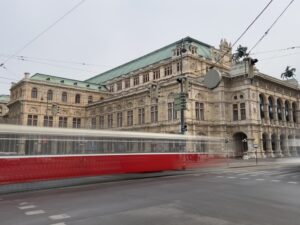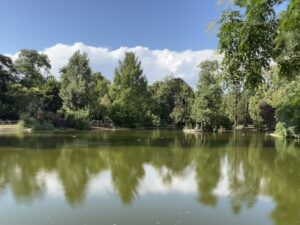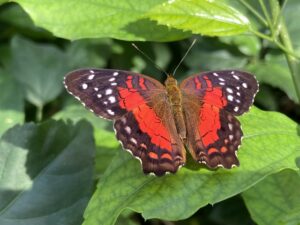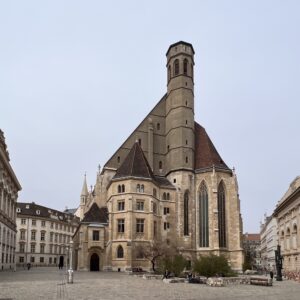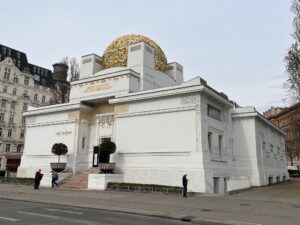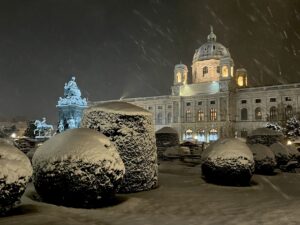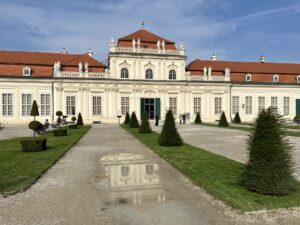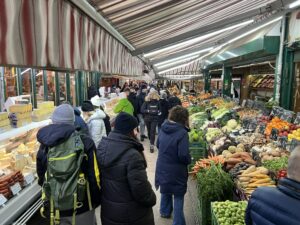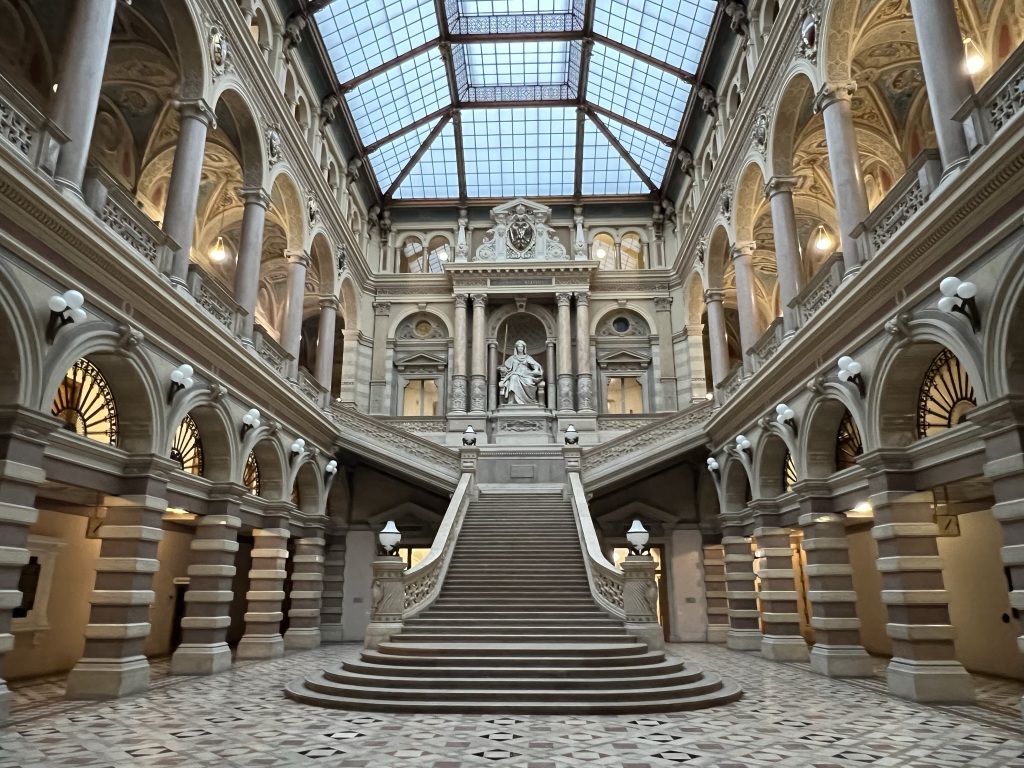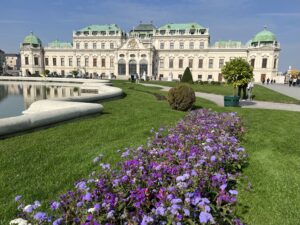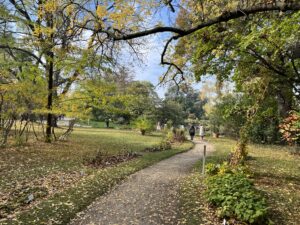Brief information:
- Where is the anchor clock? In the middle of the first district; Address: Hoher Markt10–11
- What is there to see? The Anker clock and the wedding fountain are worth seeing.
- When is it open? always
- How much is the entrance fee? for free
Anchor clock
One of the most famous buildings on the Hoher Markt is the Ankeruhr.
The Anker Clock in Vienna is an extraordinary work of art that impresses visitors with its unique design and precision. The clock is located on the facade of the former Anker Insurance building in the heart of the city and was Designed in 1914 by the architect Franz von Matsch. The Ankeruhr bridge connects the two parts of the Ankerhof building and spans the Bauernmarkt alley. This extraordinary construction, also known as the “clock bridge”, extends over a length of ten meters and rises to a height of 7.5 meters.
The Clock has a diameter of four meters one of the largest of its kind and is supported by four figural consoles. Adam and Eve are shown at the front, while angels and devils are at the back. Above the clock is a sun disk, flanked by a child with a butterfly as an allegory for life and an hourglass as a symbol for death. In the dark, the clock is illuminated by headlights, which gives it a magical look.
The figures on the clock are between 2.6 and 2.8 meters high and made of copper. Each figure moves for one hour over a scale using a chain drive and is then replaced by the next figure. The current hour is indicated as a Roman numeral above the figure, while the minutes can be read on the scale. A sonorous hourly chime sounds every full hour.
Tip: At 12 o'clock, all twelve figures (groups) parade past, accompanied by a piece of music that matches the figure, which originally came from a mechanical organ with 800 pipes, but is now played as a digital sound reproduction. The order in which the figures appear corresponds to the historical sequence.
The background of the clock consists of a 12 m² mosaic made of glass, metal and marble. In the middle is the double-headed eagle and the old coat of arms of the city of Vienna. These are surrounded by twelve other coats of arms, which represent symbols for science, art, love, music, theater, industry, trade and Viennese cuisine. Under the clock lies a basilisk from Viennese legends. On the back of the bridge is a conventional clock with hands and the inscription “The Anchor”.
The Hohe Markt in general
The Hohe Markt has been an important meeting place for Viennese and tourists alike for centuries. Once an important market place in the city, the Hohe Markt is now a place full of cafes, bars, restaurants and shops. Particularly noteworthy are the beautiful 18th century buildings that surround the square.
History of the square
Originally, the Hoher Markt was a central place for trade and business in Vienna. The first market was held here in the 12th century and it quickly developed into an important trading center for all kinds of goods.
During the Middle Ages, the Hoher Markt was also an important meeting place for political meetings and court hearings. From 1325 to 1839, the Vienna Criminal Court was located here. In 1331, Vienna's first public town hall was built here, and it remained the seat of the city government until the 19th century.
During the 19th and 20th centuries, the Hoher Markt was modernized and redesigned to meet the needs of the growing city of Vienna. New shops and residential buildings were built and the square became an important tourist destination.
Wedding fountain
The Wedding Fountain in Vienna was commissioned in 1702 by Emperor Leopold I as a thank you for the safe return of his son from the wars of the Spanish succession. The wooden votive monument was later replaced in stone and bronze.
The 18.5 metre high baroque monument fountain is decorated with four base projections, each of which is occupied by angels. The imposing bronze canopy with a halo crown by Johannes Baptista Divall sits on four Corinthian columns. The central marriage group shows Mary, Joseph and the high priest in Carrara marble, created by the Venetian sculptor Antonio Corradini. The base of the fountain consists of round and volute bases with three stone reliefs, including the biblical scenes “Adoration of the Shepherds”, “Presentation in the Temple” and “Adoration of the Magi”, an inscription tablet and lanterns on the top. Lorenzo Mattielli designed the two round basins with fountains.
Tip- the sausage stand:
If you feel hungry during your visit, treat yourself to a sausage at the sausage stand at the Hohen Markt, which is also an institution in Vienna

